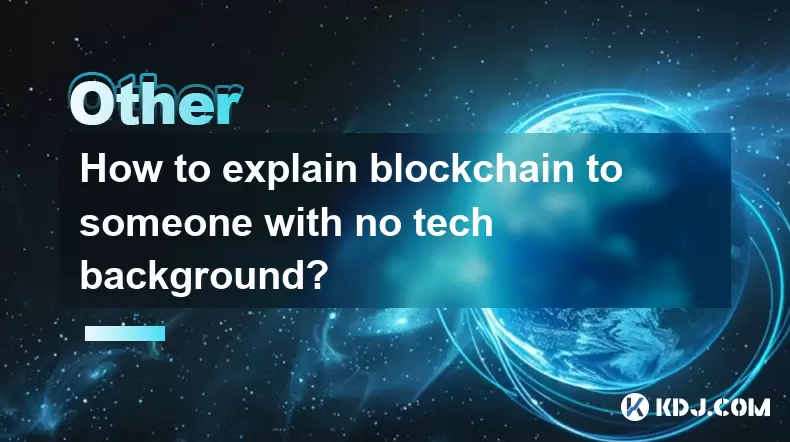-
 Bitcoin
Bitcoin $117500
-0.66% -
 Ethereum
Ethereum $3760
-1.24% -
 XRP
XRP $3.087
-2.54% -
 Tether USDt
Tether USDt $0.9999
-0.01% -
 BNB
BNB $803.6
-4.03% -
 Solana
Solana $180.3
-4.15% -
 USDC
USDC $0.9998
-0.01% -
 Dogecoin
Dogecoin $0.2218
-4.92% -
 TRON
TRON $0.3366
3.71% -
 Cardano
Cardano $0.7785
-3.73% -
 Hyperliquid
Hyperliquid $42.90
-4.75% -
 Sui
Sui $3.797
-7.45% -
 Stellar
Stellar $0.4165
-2.32% -
 Chainlink
Chainlink $17.65
-4.17% -
 Bitcoin Cash
Bitcoin Cash $561.0
-3.86% -
 Hedera
Hedera $0.2611
-4.54% -
 Avalanche
Avalanche $24.33
-7.02% -
 UNUS SED LEO
UNUS SED LEO $8.972
0.06% -
 Litecoin
Litecoin $107.6
-2.79% -
 Toncoin
Toncoin $3.254
-1.84% -
 Shiba Inu
Shiba Inu $0.00001306
-4.69% -
 Ethena USDe
Ethena USDe $1.001
0.00% -
 Uniswap
Uniswap $10.10
-4.83% -
 Polkadot
Polkadot $3.902
-4.63% -
 Monero
Monero $315.1
-2.57% -
 Dai
Dai $1.000
0.02% -
 Bitget Token
Bitget Token $4.499
-2.53% -
 Pepe
Pepe $0.00001145
-7.38% -
 Cronos
Cronos $0.1479
6.07% -
 Aave
Aave $281.3
-4.07%
What is blockchain hash algorithm? Discussion on the security of hashing algorithms
Hash algorithms like SHA-256 ensure blockchain security by creating unique, fixed-size hashes for data, linking blocks securely and detecting any tampering through the avalanche effect.
Jun 13, 2025 at 09:22 pm

Understanding the Role of Hash Algorithms in Blockchain
A hash algorithm is a cryptographic function that takes an input (or 'message') and returns a fixed-size string of bytes. The output, typically represented as a hexadecimal number, is known as a hash value or digest. In blockchain technology, hash algorithms are foundational to ensuring data integrity, immutability, and security. Each block contains a hash of the previous block, creating a secure chain of blocks.
One of the most commonly used hashing algorithms in blockchain systems is SHA-256, which stands for Secure Hash Algorithm 256-bit. It was developed by the National Security Agency (NSA) and is widely adopted in Bitcoin’s protocol. The deterministic nature of SHA-256 ensures that the same input always produces the same output, making it ideal for verifying data consistency.
How Hashing Ensures Data Integrity in Blockchain
Hash functions play a critical role in maintaining the integrity of data stored on the blockchain. Every transaction within a block is hashed together into a Merkle Tree structure, culminating in a single root hash. If any part of a transaction changes, even slightly, the resulting hash will be completely different due to the avalanche effect, a key property of cryptographic hash functions.
This sensitivity to change means that altering a single character in a transaction would invalidate the entire block and all subsequent blocks in the chain. Therefore, any unauthorized modification becomes immediately detectable. This mechanism reinforces trust in decentralized networks where no central authority oversees transactions.
The Security Properties of Cryptographic Hash Functions
Cryptographic hash functions must satisfy several important security properties to be suitable for use in blockchain:
- Pre-image resistance: Given a hash value h, it should be computationally infeasible to find any input message m such that hash(m) = h.
- Second pre-image resistance: Given an input m1, it should be difficult to find another input m2 ≠ m1 such that hash(m1) = hash(m2).
- Collision resistance: It should be hard to find two distinct inputs m1 and m2 such that hash(m1) = hash(m2).
These properties ensure that hash functions are resistant to various forms of attacks, including brute-force and birthday attacks. Without these guarantees, the immutability and trust model of blockchain would collapse.
Popular Hash Algorithms Used in Blockchain Systems
While SHA-256 remains the most famous hashing algorithm due to its use in Bitcoin, other blockchain platforms employ different hash functions depending on their design goals:
- Keccak-256: Ethereum uses this variant of SHA-3 for hashing operations. It provides similar security guarantees as SHA-256 but with a different internal structure.
- Scrypt: Litecoin and other cryptocurrencies use Scrypt, which is memory-intensive and designed to resist ASIC mining.
- X11: Dash utilizes a chained hashing approach involving 11 different algorithms for enhanced security and energy efficiency.
Each algorithm has unique features tailored to specific performance and security requirements. Choosing the right hash function depends on factors like decentralization goals, resistance to specialized hardware, and computational efficiency.
Potential Vulnerabilities and Risks in Hashing Algorithms
Despite their robustness, hash algorithms are not immune to vulnerabilities. Over time, advances in computing power and cryptanalysis can weaken previously secure algorithms. For instance, MD5 and SHA-1, once considered secure, are now deprecated due to successful collision attacks.
In blockchain, reliance on a single hash function introduces risks if that function becomes compromised. While current standards like SHA-256 and Keccak-256 remain secure against known attacks, researchers continuously evaluate them for potential weaknesses. Quantum computing also poses a theoretical threat to classical hash functions, although practical quantum attacks are not yet feasible.
To mitigate these risks, blockchain developers often incorporate multiple layers of cryptography or adopt newer algorithms that offer post-quantum resistance. Regular audits and updates to cryptographic protocols help maintain long-term security.
Frequently Asked Questions
Q: What happens if someone finds a collision in SHA-256?
If a collision were discovered in SHA-256, it would undermine the security of many blockchain systems, particularly Bitcoin. Such a discovery would likely trigger a widespread migration to alternative hashing algorithms.
Q: Can hash algorithms be upgraded in existing blockchains?
Yes, blockchains can implement upgrades to switch hash algorithms through a process called a hard fork. However, this requires consensus among network participants and may introduce compatibility issues.
Q: Why do some blockchains use multiple hash functions?
Using multiple hash functions increases security by reducing the risk associated with a single point of failure. If one algorithm is compromised, others still protect the system.
Q: How does hashing contribute to mining in proof-of-work systems?
Miners repeatedly hash block headers with varying nonce values to find a hash below a target threshold. This process secures the network and validates transactions without requiring a central authority.
Disclaimer:info@kdj.com
The information provided is not trading advice. kdj.com does not assume any responsibility for any investments made based on the information provided in this article. Cryptocurrencies are highly volatile and it is highly recommended that you invest with caution after thorough research!
If you believe that the content used on this website infringes your copyright, please contact us immediately (info@kdj.com) and we will delete it promptly.
- Bitcoin Price Drop: Navigating the Dip with Corporate Strategies
- 2025-07-30 07:30:12
- BNB's Bullish Cycle: ChatGPT Weighs In on the Future
- 2025-07-30 06:50:12
- XRP's Wild Ride: Open Interest, Price Crash Fears, and What's Next
- 2025-07-30 07:50:12
- SEC Greenlights In-Kind Creations: A Game Changer for Bitcoin ETPs?
- 2025-07-30 07:50:12
- Arbitrum (ARB) Price Prediction: Navigating the Ups and Downs of the Best ETH Eco
- 2025-07-30 06:50:12
- Ethereum, Ruvi AI, Presale: The Next Big Thing in Crypto?
- 2025-07-30 07:30:12
Related knowledge

How to start a business using blockchain?
Jul 28,2025 at 12:36am
Understanding the Basics of Blockchain TechnologyBefore diving into the process of starting a business using blockchain, it's crucial to understand wh...

What is a token on the blockchain?
Jul 21,2025 at 07:00am
Understanding the Concept of a TokenIn the realm of blockchain technology, a token is a digital representation of an asset or utility that exists on a...

Can blockchain be used for identity verification?
Jul 18,2025 at 02:14pm
Understanding Identity Verification in the Digital AgeIn the modern digital landscape, identity verification has become a critical component for ensur...

What is a consensus mechanism in blockchain?
Jul 21,2025 at 03:01am
Understanding the Basics of Consensus MechanismsA consensus mechanism is a critical component of any blockchain network. It refers to the process by w...

How to explain blockchain to someone with no tech background?
Jul 18,2025 at 11:08pm
Understanding the Basics of BlockchainTo explain blockchain to someone with no tech background, it's essential to start with simple analogies and avoi...

Who invented blockchain technology?
Jul 23,2025 at 01:28am
Origins of Blockchain TechnologyBlockchain technology did not emerge from a single inventor or institution. Instead, it evolved through a series of ac...

How to start a business using blockchain?
Jul 28,2025 at 12:36am
Understanding the Basics of Blockchain TechnologyBefore diving into the process of starting a business using blockchain, it's crucial to understand wh...

What is a token on the blockchain?
Jul 21,2025 at 07:00am
Understanding the Concept of a TokenIn the realm of blockchain technology, a token is a digital representation of an asset or utility that exists on a...

Can blockchain be used for identity verification?
Jul 18,2025 at 02:14pm
Understanding Identity Verification in the Digital AgeIn the modern digital landscape, identity verification has become a critical component for ensur...

What is a consensus mechanism in blockchain?
Jul 21,2025 at 03:01am
Understanding the Basics of Consensus MechanismsA consensus mechanism is a critical component of any blockchain network. It refers to the process by w...

How to explain blockchain to someone with no tech background?
Jul 18,2025 at 11:08pm
Understanding the Basics of BlockchainTo explain blockchain to someone with no tech background, it's essential to start with simple analogies and avoi...

Who invented blockchain technology?
Jul 23,2025 at 01:28am
Origins of Blockchain TechnologyBlockchain technology did not emerge from a single inventor or institution. Instead, it evolved through a series of ac...
See all articles

























































































